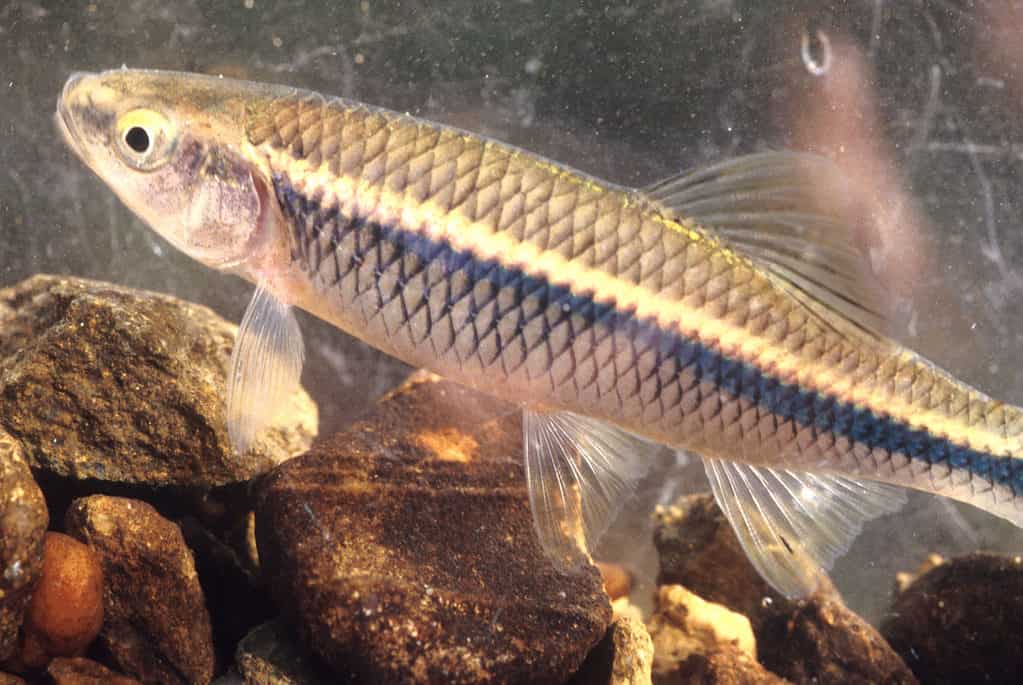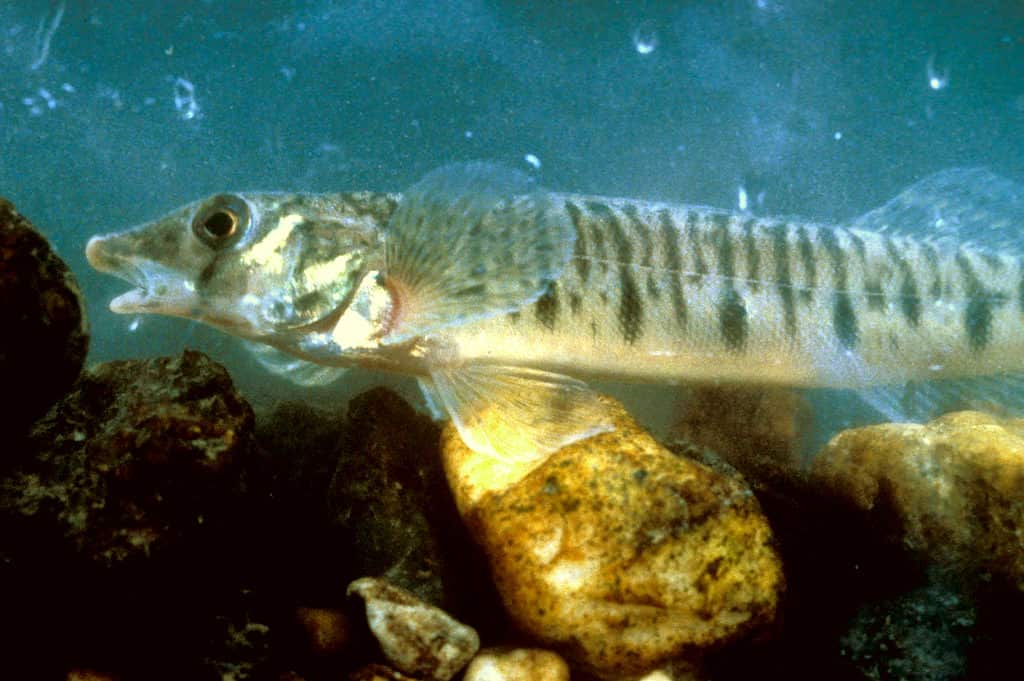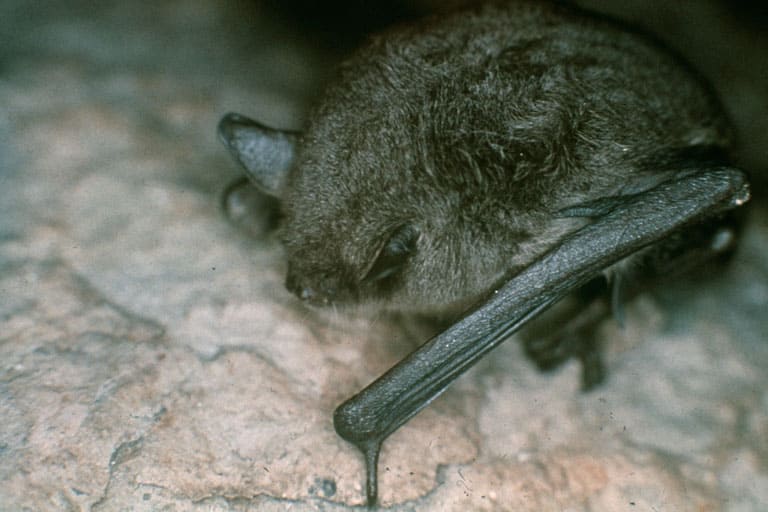An animal is classified as endangered if it is at risk of extinction within the foreseeable future throughout a significant portion of its natural range. The federal government has a list of endangered animals according to the Endangered Species Act. However, each state may also adopt its own endangered animal list. Forty-two of the animals on the federal government’s endangered and threatened animal species list call Georgia home.
The Georgia Department of Natural Resources also maintains a separate list of state-specific species that need to be protected because of their scarcity. Efforts are underway to protect these species and promote their recovery until they’re no longer “endangered” or “threatened.” This post lists some of Georgia’s animal species that are considered endangered.
1. Blue Shiner
The blue shiner is an endangered fish species found primarily in the Oostanaula and Conasauga rivers in Georgia. The species also lives in Tennessee and other rivers in Alabama. The lifespan of the blue shiner is around three years.
As the name implies, the blue shiner fish is a medium-sized blue fish with contrasting yellow fins. The fish is a visual drift feeder. In other words, the blue shiner can only feed off floating invertebrates in clear waters. This unique feeding habit is one of the main reasons the species is currently struggling to survive.
Excess sedimentation and pollution in Georgia’s waterways make it difficult for the blue shiner to feed. Also, this makes reproduction difficult for the species since the females can only attract the males to spawn when the water is clear.
Efforts are ongoing to preserve the fish population by improving water quality. One of the measures is the regulation of construction projects along the waterways. Hopefully, this should help the recovery of the blue shiner population and many other endangered aquatic animals in Georgia.

2. Conasauga Logperch
Conasauga logperch is a type of ray-finned fish. The fish has a distinct yellow color with bold, dark “tiger” stripes. While the name might sound like a scientific name, it is actually the species’ common name. The scientific name of the Conasauga logperch is Percina jenkinsi.
The logperch is a slender freshwater fish that lives downstream in the Conasauga River (hence the name). Conasauga logperch feeds on fish eggs, limpets, mayflies, and other aquatic invertebrates. The juvenile fish majorly eats microcrustaceans. The species spawns during the spring and lays its eggs in the settled river sediments for safety.
Like the blue shiner, clean water is essential to the logperch’s survival, and poor water quality is the main reason for its inclusion on the list of endangered animals in Georgia. The fish has been endangered since 1985. The fish is so critically endangered that it could go extinct from just one major event, such as a toxic chemical spill. Runoffs from developed regions pollute the natural habitat of the fish. Apart from the polluted waters that destroy its habitat, predators like brown trout actively prey on this fish, making it difficult for the species to recover.

3. Coosa Moccasinshell
Coosa moccasinshell is a rare variant of freshwater river mussels. The 1.5-inch-long clam has a thin, brown rhomboid shell. You can find this mollusk in non-stagnant water bodies with gravel to sandy gravel substrates in Georgia. In its larval stage, it is a parasite that attaches itself to host fish.
The mollusk is already locally extinct in Alabama and is on the list of endangered species in Georgia. Coosa moccasinshell has been on the federal list of endangered animals since 1993. Sedimentation and water degradation by human activities have negatively altered the natural habitat of the mollusk.
Channelization, mining, agriculture, and residential and industrial developments have modified the structure of the aquatic ecosystem where this mussel lives. Discharge and runoff from industrial activities in the regions are contributing to increased acidity of the water and changing its chemical composition. This negatively affects the host fish for the larval stage and even the adult Coosa.
4. Edmund’s Snaketail
Ophiogomphus edmundo is an endangered dragonfly species with a very distinct appearance. Unfortunately, it is one of the endangered animals in Georgia. The insect has a bright green head, bluish-green eyes, and a matching thorax. Females have thick abdomens with yellow slanty markings on all segments. This insect can grow to a maximum length of about 1.9 inches as an adult.
Edmund’s snaketail has a very limited distribution range. It is only found in a few locations, including Georgia, South Carolina, Tennessee, and South Carolina. Even in the few Georgia counties where you can find it, it does not have a thriving population. In fact, experts thought the species had gone extinct in the 1970s, but they recently discovered a small population.
Industrial and residential development, as well as various agricultural practices, have put the species on the verge of extinction. Bank destabilization, sedimentation, and poor water quality make it difficult for the larval stage of this dragonfly to survive.
5. Gray Bat
Known scientifically as Myotis grisescens, gray bats are medium-sized flying mammals that feed on insects like moths and flies. They’re one of three species of bats found in Georgia. This bat has a wingspan of about 11 inches, with grayish fur that turns reddish brown during the summer.
Gray bats are usually found in karst regions characterized by springs and caves. It is Georgia’s largest Myotis — the genus of bats with long mouse ears. During their hibernation season, gray bats stay in Northern Alabama, Kentucky, Missouri, and Arkansas. The species, however, migrate to northwestern Georgia and other locations during other times of the year.
Gray bats are on federal and Georgia’s lists of endangered and threatened animal species. Anthropogenic disturbances of their habitat are the major causes of their declining population. The destruction of caves for commercialization purposes and inexperienced cave exploration account for some of these disturbances. These actions may interfere with the natural sleep pattern of the bats and alter their physiology. The disturbances can also make female bats abandon their babies, and the young bats are unlikely to survive when left on their own.

©Jerry A. Payne, USDA Agricultural Research Service, Bugwood.org, CC BY 3.0 US <https://ift.tt/PUZjJOR>, via Wikimedia Commons
6. Piedmont Blue Burrower
The Piedmont blue burrower (Cambarus harti) is a species of crayfish native to Georgia. The IUCN reviewed the species’ conservation status in 2010 to reflect a very high probability of extinction. The crayfish has a deep color with a narrow abdomen and robust claws. Cambarus harti grows to a maximum length of about three inches at maturity and lives in shallow water.
The Piedmont blue burrower lives in burrows in just two localities within Meriwether County in Georgia. The relatively small range of the Piedmont blue burrower makes it vulnerable and at risk of extinction. Land-disturbing human activities affect the burrowing activities of this species and expose them to the risk of extinction due to their limited population. The law in Georgia considers them endangered species and in need of protection.
Conclusion
Apart from the six animals on this list, there are still a number of other federal and state-endangered animals native to Georgia. It will be a real shame if these animals disappear due to human activities. Protecting wildlife habitat from incursive human activities remains one of the best ways to conserve these species. While several local agencies are advocating for better conservation and management of these species, conscious individual efforts will go a long way in helping them bounce back as well.
Up Next
- 10 Endangered Snakes We Should Act to Save
- 10 Of The Most Endangered Sharks In The World
- 15 Endangered Species in Texas
The post Discover 6 Endangered Animals That Call Georgia Home appeared first on AZ Animals.
from Animal News, Facts, Rankings, and More! - AZ Animals https://ift.tt/1GZoyKY